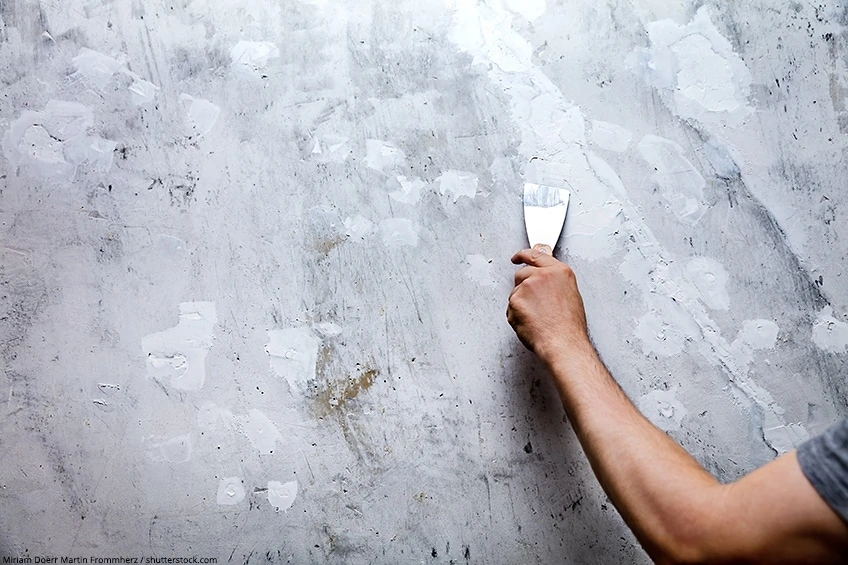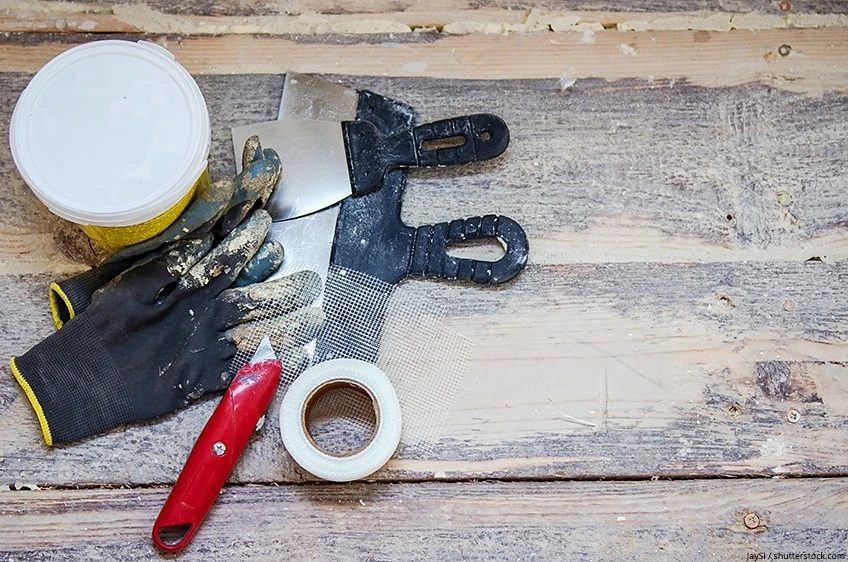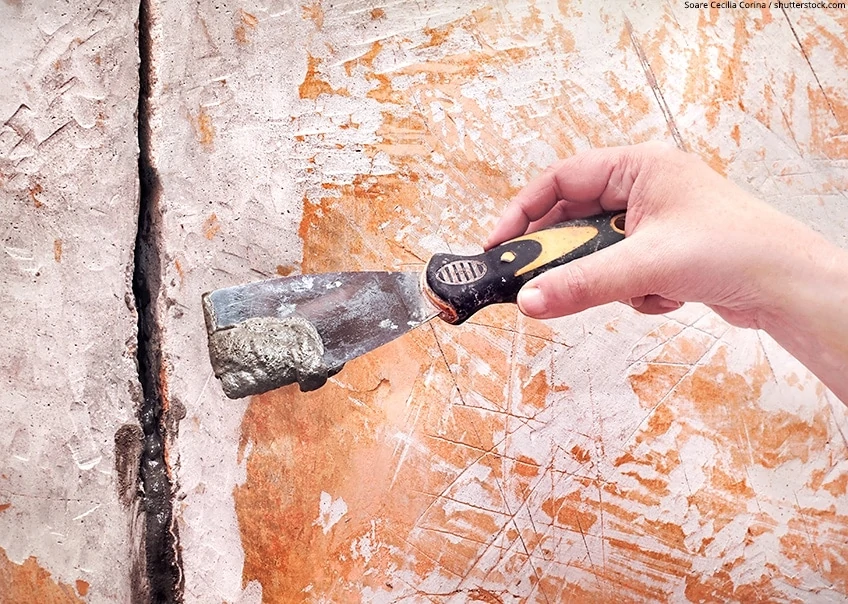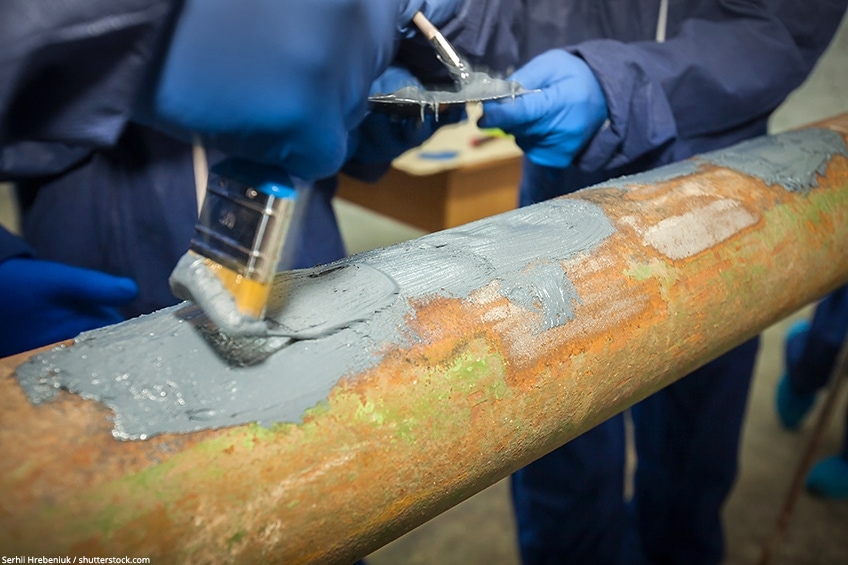Epoxy Filler Guide – Filler for wood and every other application
This post may contain affiliate links. We may earn a small commission from purchases made through them, at no additional cost to you. You help to support resin-expert.com
If you have a scratch in your car or a hole in the wall and you are a talented craftsman, you can pick up the tools yourself and save a lot of money. However, this requires not only the right tools and skills, but also the right putty. In our Epoxy Filler Guide, you will learn about the advantages and disadvantages of this filler and how it can be optimally applied. We also tell you what to look out for when you want to buy epoxy putty.
Table of Contents
What is Epoxy Filler?
Fillers, in general, are used to fill unsightly dents, scratches, cracks, holes, or joints. A distinction is made between ready-to-use putty, which can be used immediately, and dry putty, which must first be mixed with water.
However, there are other types of fillers, such as resin-based fillers. These include the epoxy resin putty.
Epoxy Filler is a plastic filler that works on an epoxy resin basis and can be used as concrete and wood filler, as well as plastic filler and GRP filler. Its application is effortless, and the mixing of the two components is usually not difficult for the user. It is mixed at a ratio of 2 : 1 (base component to hardener).
Epoxy resin putty is solvent-free. This plastic putty can be used on many different materials such as:
- Wood
- Concrete
- Aluminum
- Steel
- CSF
- Plastics
This compatibility with different materials as well as the addition of different additives or filling materials offers many different application possibilities. Epoxy putty is therefore ideal for filling holes or dents, but also for levelling out unevenness and even for repairing wood damage.
Different fields of application of epoxy putty
Epoxy resin putty is not only very popular in the industrial and maritime application sector, but also among do-it-yourselfers and hobby users. But epoxy putty can do more than just repair damage to car bodies or boat hulls: It even removes cracks and unwanted joints in walls and concrete and screed floors, making it suitable for every imaginable repair work.
Epoxy resin putty also cuts a fine figure in pool construction and as a sealing compound for overflows or transitions. But there are even more possible applications.
Filler car / Automotive compound
Sooner or later, every car shows signs of wear and tear, whether they are caused by accidents or minor inattention. Sometimes the ravages of time have simply gnawed at the bodywork. Then dents, cracks, dents, or scratches appear. Hobby artisans usually know what to do: they repair the area in question with the help of car putty.
But which putty for the car is the best? After all, there are many different products available on the market.
Epoxy filler is a two-component filler that is, in principle, suitable for almost all surfaces. However, especially car body parts made of sheet metal or plastic benefit from the excellent properties of this material. When using a two-component epoxy filler for cars, please note that it should not be used with one-component primers. It is better to stick entirely to two-component products.
- automotive body filler
- With plastic cap
- Microsphere formula
- it will be a salmon color when mixed
Epoxy Wood Filler
As a liquid plastic, epoxy resin can be used to give wood a water-repellent surface. As wood filler 2K, it is able to repair and seal cracks and holes in damaged wooden components. It is often applied not only with a spatula, but also with syringes or brushes, in order to achieve greater accuracy in the work.
Epoxy wood filler 2K is often mixed with wood flour to increase its strength. Afterward, the filler is so resistant that it can be used to repair window frames that are exposed to high UV and weather conditions.
After the resin has cured, you can work on it mechanically with tools such as a grinder, rasp, or saw. Once you have sanded it, you can also paint or varnish it. This allows it to match its color to its surroundings and is not noticeable after the repair.
- Epoxy Wood Replacement Compound
- Solids and Shrink Free
- Contains no VOC's or Noxious Odors
- Easy to Sand and Paint
- Bonds Permanently to Wood and other Surfaces
Marine Epoxy Putty
Marine epoxy putty is specially formulated for repairing boat hulls. Owners of boats benefit from the high resistance to osmosis, the excellent adhesive properties, especially on aged, damaged, and soft wood, and the easy application of the epoxy filler. Epoxy filler is also excellently suited for profiling work.
Boat Epoxy filler is suitable for both underwater and above-water areas. The substrate for the filler should be free of grease and dust and lightly sanded to ensure optimum adhesion of the compound. After about seven hours at an ambient temperature of at least twenty degrees Celsius, the hardened mixture can be sanded.
- Lightweight epoxy putty for repairing rotted, missing, or damaged wood
- Equal part mixing, moldable to any shape, and adheres vertical surfaces
- Cured putty can be sanded, drilled, cut, carved, stained, or painted
Advantages and disadvantages of epoxy putty
Epoxy resin-based fillers have various advantages and disadvantages:
Advantages
- Simple mixing and equally simple processing
- Short curing time until the compound is grindable
- Applicable on many different surfaces
- Contains no solvents
- High resistance to thermal and mechanical stress
- Can be applied in layers
- High UV and weathering resistance
- High corrosion resistance and high resistance to chemical substances and oils
- High resistance to osmosis
- Very low shrinkage after curing
Disadvantages
- Epoxy resin putty is relatively expensive
- Epoxy resin generally has an allergenic potential; therefore suitable protective measures should be taken when working with it
- As a wooden filler, it has the disadvantage of not allowing the wood to breathe; it is said not to be open to diffusion
Here it becomes clear that working with epoxy filler is definitely worthwhile, as it offers the user only a few disadvantages, but many advantages.
Instructions: Epoxy putty application using the example of a car
First of all, it is best not to attempt to repair damage to your vehicle unless you have the necessary expertise. Otherwise, it is possible that the damage may become even greater and that a severe rust problem may soon threaten.
To prevent this from happening, we help you with our epoxy putty instructions:
- First, you should sand the substrate over a large area if you want to apply epoxy filler to a dent or scratch. Be quite generous; the area worked on may be much larger than the actual putty stain. Then prime the surface with an epoxy primer. This should be applied thinly to ensure optimum protection against rust underneath. It is essential that you use a primer that matches the epoxy filler at this point, otherwise sufficient rust protection in combination with the epoxy filler is not guaranteed.
- The outlet edges of the putty stain should be sanded very finely. You can use 220 sandpaper, for example.
- Now you can mix the putty according to the instructions supplied. However, only mix as much of it as you can use in about five minutes, as the pot life is limited.
- If you have bought epoxy putty in a practical double cartridge, you can apply the putty by piston pressure on a flat board and mix the two components with a spatula again thoroughly until a homogeneous mass is obtained.
- After this, deep dents are first thinly filled with filler. For this purpose, the filler is rubbed into the substrate. Now the indentation is completely filled with the epoxy filler.
- Try to achieve a surface that is as smooth as possible so that you do not have to sand the filled dent unnecessarily afterward. However, a little sanding is usually necessary.
- Allow the epoxy putty to dry for at least six to seven hours and sand it carefully smooth. Afterward, you can apply an Epoxy Finishing Filler. Once you have worked the area until it is completely smooth, you can paint it as you wish.
- The dosing tube of the epoxy filler cartridge must be cleaned carefully after work to prevent the compound from drying out.
Safety Instructions for the Application of Epoxy Filler
Also, when working with epoxy putty, care must be taken to ensure safety, as you may come into contact with potentially hazardous substances. Wear long-sleeved clothing and mouth and eye protection. Gloves should also be used. Ensure that your workplace is well ventilated. If mucous membranes or eyes come into contact with the epoxy filler, wash them out thoroughly with lukewarm water for several minutes and then seek medical attention immediately. Take the pack to your doctor so that he can quickly get an idea of the ingredients.
In addition, DO NOT handle an open fire in the vicinity of your workplace!
Questions and answers
In our FAQ, you will find short and concise answers to your most pressing questions:
Which epoxy filler for car?
The answer to this question depends on the damage you want to repair. There are different fillers. In general, if you damage your car, you start with a filler. Then a fine filler is applied. In addition to the standard fillers, there are resin-based fillers and metal fillers. It is not possible to say in general which filler is precisely suitable for repairing the damage to your car. In general, however, epoxy resin putty is ideal for an extensive range of applications.
How long is the drying time for epoxy fillers?
As a rule, the putty should dry for about six to seven hours before it has completely hardened and can be sanded down.
There are many different commercially available fillers available, from which you can choose the one that suits you best. If you attach importance to a putty that offers a variety of processing possibilities and is easy to handle, it is certainly worthwhile for you to take a closer look at epoxy putty.










